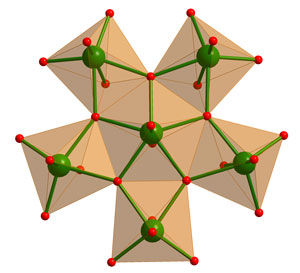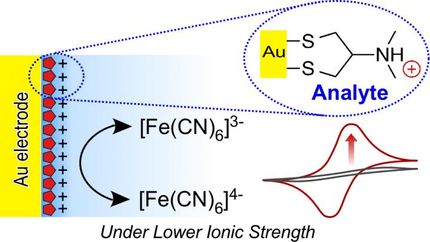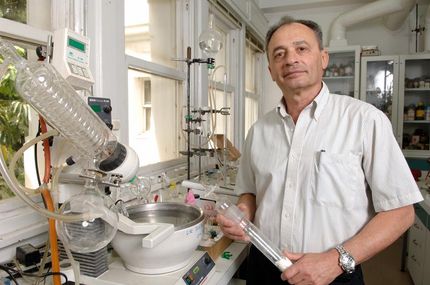Simultaneous analysis
Simultaneous carbon dioxide and oxygen sensing
Only plants can make sugars from the carbon dioxide byproduct and at the same time expel oxygen during photosynthesis. This amazing skill has intrigued scientists for decades but separating out the carbon dioxide inputs and outputs while keeping tabs on oxygen levels has always proved difficult.
Now, a new type of chemical sensor could change all that. The sensor developed by Otto Wolfbeis and colleagues at the Institute of Analytical Chemistry, Chemo- and Biosensors at the University of Regensburg, Germany, will allow clearer insights into plant respiration and photosynthesis. It could also have application in the food and drink industry as well as in the biotech industry where fermentation and related plant processes are important.
Woflbeis explains that in order to unravel the intricacies of photosynthesis and respiration, two of the most important biochemical processes, scientists have to be able to measure carbon dioxide and oxygen at the same time. He and his team have now found a way to side-step the interference from which all previous sensors suffer. The team first create nanoparticles carrying a fluorescent group that react to light and glow only when they are in contact with carbon dioxide molecules.
These nanoparticles are then embedded in a layer of polymer resin. A second compound that does the same in the presence of oxygen molecules is embedded in a second layer of polymer and the two films sandwich between them a layer of an organometallic compound containing the heavy metal iridium. This layer produces a reference signal for the detection of fluorescence triggered by the two gases. Importantly, however, it is impermeable to oxygen molecules and so its light is not quenched by interference from oxygen.
A blue light-emitting diode (LED) then provides the stimulation for the two sensitive layers to produce light, but only in the presence of their respective gases. A tiny photodetector can then measure the wavelength of light emitted, which is different from each sensor molecule. The strength of the emitted light at each wavelength correlates with the concentration of each of the two gases.
The team tested their sensor over a wide range of different carbon dioxide and oxygen concentrations produced by a growing microbial culture and found it to operate with a remarkable ±5% accuracy at concentration levels expected for real experiments. At much higher but unrealistic concentrations, accuracy deviated only by as much ±10%. Because the device is designed to be reusable rather than a one-shot dip test, the team tested its response after several hundred runs and found it to still be working at these levels of accuracy after 800 runs.
They anticipate that their composite material will become a powerful tool in biological, biotechnological, and medical research. The simultaneous sensor could also have applications in environmental monitoring of sea water and sewage and in medical diagnostics, where blood gas levels are important to understanding the progression of certain diseases. The research will be commercialized by Presens GmbH.
Original publication: O. Wolfbeis et al.; "Composite Material for Simultaneous and Contactless Luminescent Sensing and Imaging of Oxygen and Carbon Dioxide"; Advanced Materials 2006, 18, No. 12, 1511-1516.
Topics
Organizations
Other news from the department science
These products might interest you

NANOPHOX CS by Sympatec
Particle size analysis in the nano range: Analyzing high concentrations with ease
Reliable results without time-consuming sample preparation

Eclipse by Wyatt Technology
FFF-MALS system for separation and characterization of macromolecules and nanoparticles
The latest and most innovative FFF system designed for highest usability, robustness and data quality

DynaPro Plate Reader III by Wyatt Technology
Screening of biopharmaceuticals and proteins with high-throughput dynamic light scattering (DLS)
Efficiently characterize your sample quality and stability from lead discovery to quality control

Get the chemical industry in your inbox
By submitting this form you agree that LUMITOS AG will send you the newsletter(s) selected above by email. Your data will not be passed on to third parties. Your data will be stored and processed in accordance with our data protection regulations. LUMITOS may contact you by email for the purpose of advertising or market and opinion surveys. You can revoke your consent at any time without giving reasons to LUMITOS AG, Ernst-Augustin-Str. 2, 12489 Berlin, Germany or by e-mail at revoke@lumitos.com with effect for the future. In addition, each email contains a link to unsubscribe from the corresponding newsletter.
Most read news
More news from our other portals
See the theme worlds for related content
Topic world Synthesis
Chemical synthesis is at the heart of modern chemistry and enables the targeted production of molecules with specific properties. By combining starting materials in defined reaction conditions, chemists can create a wide range of compounds, from simple molecules to complex active ingredients.

Topic world Synthesis
Chemical synthesis is at the heart of modern chemistry and enables the targeted production of molecules with specific properties. By combining starting materials in defined reaction conditions, chemists can create a wide range of compounds, from simple molecules to complex active ingredients.
Topic world Sensor technology
Sensor technology has revolutionized the chemical industry by providing accurate, timely and reliable data across a wide range of processes. From monitoring critical parameters in production lines to early detection of potential malfunctions or hazards, sensors are the silent sentinels that ensure quality, efficiency and safety.

Topic world Sensor technology
Sensor technology has revolutionized the chemical industry by providing accurate, timely and reliable data across a wide range of processes. From monitoring critical parameters in production lines to early detection of potential malfunctions or hazards, sensors are the silent sentinels that ensure quality, efficiency and safety.
Last viewed contents
McKesson

Building with pentagons
Le_Sage's_theory_of_gravitation

Researchers at the forefront of developing machine learning methods for chemical discovery - Machine learning to help identify drug candidates
Ununseptium
Gemology
Donepezil
1,2-Dibromoethane
Coating
Pyrolysis
Navier-Stokes_equations





























































